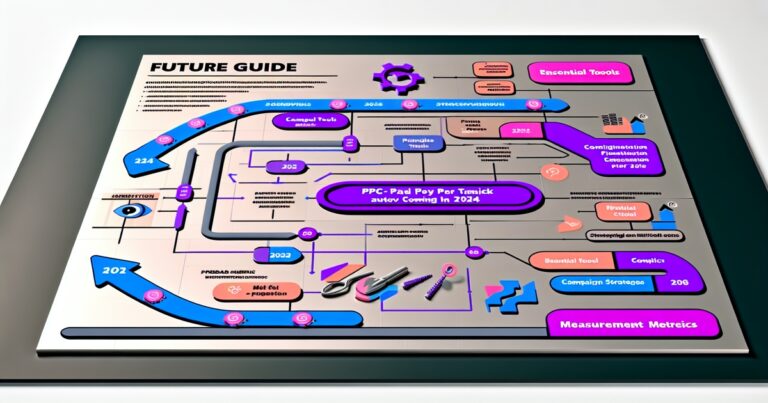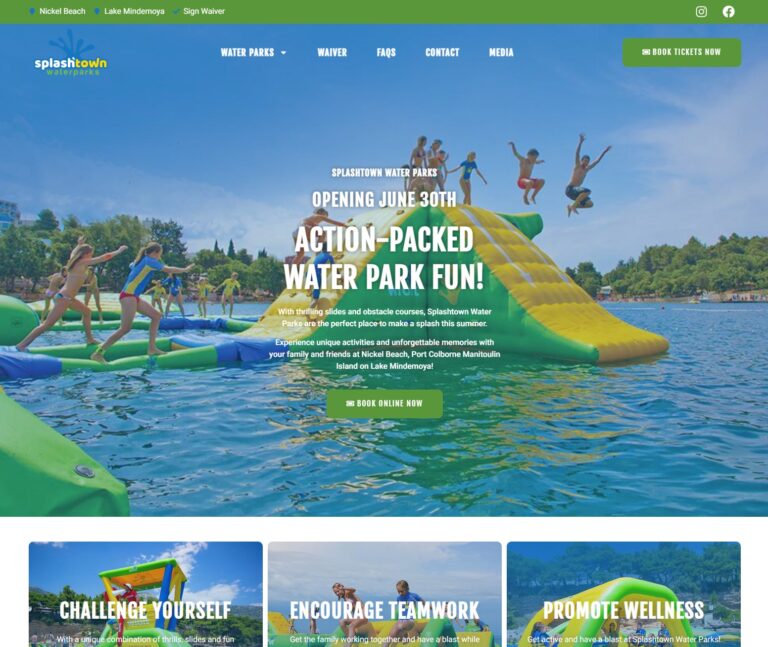In today’s competitive online landscape, businesses must leverage effective search engine marketing (SEM) strategies to attract their target audience and drive conversions.
In this all-encompassing guide, we’ll explore proven SEM techniques and best practices that will help you amplify your online presence, draw in more customers, and grow your brand.
Whether you’re a newcomer to the industry or aiming to refine your existing SEM efforts, this guide provides valuable insights for businesses of all sizes. Let’s dive in and unlock the full potential of your brand!
1. Market Research and Analysis
Identify target audience
Understand your target customer demographics and online behaviour to better tailor your marketing efforts.
a. Define your ideal customer
Start by creating a buyer persona or a detailed profile of your ideal customer. Consider age, gender, location, income level, interests, and online habits. This will help you better understand the characteristics and preferences of the people most likely to buy your products.
b. Analyze existing customers
Examine your current customer base to identify trends and patterns. Look at which products are popular, how customers found your website, and their demographic information. This will provide valuable insights into your existing audience and help you refine your target audience.
c. Conduct market research
Gather information on your industry, competitors, and potential customers. This can include conducting surveys, reviewing industry reports, and analyzing competitor websites and customer reviews. Market research will help you understand the broader context of your target audience and identify any gaps or opportunities in the market.
d. Use analytics tools
Leverage analytics tools such as Google Analytics, Facebook Insights, and Instagram Insights to gain insights into your audience’s online behavior, including their browsing habits, the devices they use, and the content they engage with. This will help you tailor your marketing efforts to better resonate with your target audience.
e. Segment your audience
Once you clearly understand your target audience, segment them into smaller groups based on specific criteria such as demographics, interests, or purchase behavior. This will allow you to create more targeted marketing campaigns and deliver personalized content that appeals to each segment, increasing your chances of converting them into customers.
By identifying your target audience and understanding their online behavior, you can create tailored marketing strategies that resonate with your potential customers and drive more conversions. Always continually monitor and update your audience research to stay ahead of changing trends and preferences.
Competitor analysis
Conducting a thorough competitor analysis is vital for understanding your position in the market and uncovering growth opportunities. Here are some key aspects to consider when analyzing your competitors’ online presence:
a. Identify your main competitors
Start by identifying your primary competitors, both direct and indirect. Direct competitors offer similar products or services, while indirect competitors may offer substitutes or alternatives. Make a list of 5-10 competitors that you will closely analyze.
b. Analyze their websites
Examine your competitors’ websites to understand their design, user experience, and overall marketing approach. Pay attention to their product offerings, pricing strategies, calls-to-action, and promotional tactics. This will help you identify their strengths and weaknesses and find areas where you can differentiate your own brand.
c. Review their content strategy
Evaluate your competitors’ content, including blog articles, videos, infographics, and social media posts. Analyze the topics they cover, the frequency of their updates, and the quality of their content. This will help you uncover gaps in their content strategy that you can capitalize on and inspire your own content creation efforts.
d. Study their SEO efforts
Use tools like SEMrush, Ahrefs, or Moz to analyze your competitors’ keyword rankings, organic traffic, and backlink profiles. Identify the keywords they’re targeting, the types of websites that are linking to them, and any gaps in their keyword strategy. This will help you develop an effective SEO plan to outrank your competitors in search engine results.
e. Examine their social media presence
Review your competitors’ social media profiles on platforms like Facebook, Instagram, Twitter, and LinkedIn. Analyze their follower count, engagement rates, posting frequency, and the types of content they share. This will help you understand their social media strategies and identify improvement areas in your social media marketing efforts.
f. Assess their paid advertising campaigns
Investigate your competitors’ paid advertising campaigns on platforms like Google Ads, Facebook Ads, and Instagram Ads. Look for insights on their ad creatives, target keywords, and target audience demographics. This will help you understand their advertising strategies and discover potential opportunities for your own paid advertising campaigns.
g. Identify gaps and opportunities
Once you have thoroughly analyzed your competitors, identify the gaps in their strategies and any opportunities for your own business to exploit. These could include unaddressed customer needs, underutilized marketing channels, or content topics that your competitors haven’t covered.
By studying your competitors’ online presence, keywords, ads, and backlink profiles, you can gain valuable insights into their strategies and identify areas where you can differentiate your brand and capitalize on market opportunities. Continuously monitor your competitors’ activities to stay ahead of the competition and adapt your strategies as needed.
Keyword research
Keyword research identifies the search terms your target audience uses when looking for similar products or services. By targeting high-volume, low-competition keywords, you can improve your visibility in search engine results and drive more organic traffic to your website. Here are some steps to conduct effective keyword research:
a. Brainstorm initial keyword ideas
Start by brainstorming a list of search terms related to your products or services. Think about the words and phrases your potential customers might use when searching for your offerings. This initial list will serve as a starting point for your research.
b. Use keyword research tools
Leverage keyword research tools like Google Ads Keyword Planner, SEMrush, or Ahrefs to expand your list of keywords and gather important data on search volume, competition, and keyword difficulty. These tools will help you identify high-volume, low-competition keywords that are more likely to drive organic traffic to your website.
c. Analyze long-tail keywords
Long-tail keywords are longer, more specific search terms that typically have lower search volume but higher conversion rates. These keywords tend to be less competitive, making it easier to rank for them. Use keyword research tools to find long-tail keywords related to your products or services, and incorporate them into your SEO and content marketing strategies.
d. Study your competitors’ keywords
Analyze the keywords your competitors are targeting by using tools like SEMrush or Ahrefs. This can help you discover keywords you may have overlooked or identify gaps in their keyword strategy that you can exploit.
e. Group and categorize your keywords
Organize your keywords into groups or categories based on their relevance to your products or services. This will make it easier to create targeted content and optimize your website for these keywords. You can also use these categories to prioritize your SEO efforts based on search volume, competition, and potential impact on your organic traffic.
f. Monitor keyword performance
Continuously track the performance of your targeted keywords, including their search rankings, organic traffic, and conversion rates. This will help you identify underperforming keywords and adjust your SEO and content strategies as needed.
g. Update your keyword research periodically
Keyword trends and search volumes can change over time, so it’s essential to revisit your keyword research regularly. This will help you stay updated on new opportunities, emerging trends, and changes in search behavior.
By using tools like Google Ads Keyword Planner, SEMrush, or Ahrefs to conduct thorough keyword research, you can identify high-volume, low-competition keywords relevant to your products or services. Incorporating these keywords into your SEO and content marketing efforts will help you increase your visibility in search engine results, attract more organic traffic, and ultimately drive more conversions.
2. Search Engine Optimization (SEO)
On-page optimization
On-page optimization involves making improvements to your website’s individual pages to improve their visibility in search engine results. Optimizing elements such as title tags, meta descriptions, header tags, image alt tags, and content with the researched keywords makes it easier for search engines to understand your content and rank your pages higher. Here are some key aspects of on-page optimization:
a. Title tags
Title tags are the HTML elements that define the title of a web page. They appear in search engine results and browser tabs. Create unique, descriptive, and keyword-optimized titles for each page on your website, ensuring they accurately represent the content and are under 60 characters in length.
b. Meta descriptions
Meta descriptions are HTML attributes that provide a brief summary of a web page’s content. They appear in search engine results below the title tag. Write compelling and keyword-optimized meta descriptions for each page, aiming for 150-160 characters in length. This can help improve click-through rates (CTR) from search engine results.
c. Header tags (H1, H2, H3)
Header tags (H1, H2, H3, etc.) are used to structure your content and indicate its hierarchy. Use header tags to break up your content into easily digestible sections and include relevant keywords where appropriate. Ensure that you use only one H1 tag per page and follow a logical structure with your H2, H3, and other subheadings.
d. Image alt tags
Image alt tags are HTML attributes used to describe the content of an image. They help search engines understand the context of the image and can improve your website’s accessibility for users with screen readers. Include descriptive and keyword-optimized alt tags for all images on your website.
e. Keyword optimization
Incorporate your researched keywords naturally throughout your content, including in headings, body text, and internal links. Avoid keyword stuffing, as this can lead to penalties from search engines. Instead, focus on providing valuable, engaging, and relevant content for your target audience, using keywords where they make sense.
f. Internal linking
Internal linking refers to linking your website’s pages to one another. This helps search engines crawl your website more effectively and can improve user experience by guiding visitors to related content. Use keyword-optimized anchor text when linking to other pages on your website, but ensure the links are relevant and add value to the user.
g. URL structure
Create clear, descriptive, and keyword-optimized URLs for each page on your website. A well-structured URL can help search engines understand the content of the page and can improve user experience by indicating the page’s topic. Use hyphens to separate words in your URLs, and avoid using special characters or unnecessary parameters.
By focusing on on-page optimization and incorporating your researched keywords into your website’s title tags, meta descriptions, header tags, image alt tags, and content, you can improve your visibility in search engine results and drive more organic traffic to your website. Remember to continuously monitor your website’s performance and adjust your on-page optimization efforts as needed.
Technical SEO
Technical SEO involves optimizing your website’s infrastructure to improve its performance, accessibility, and indexability by search engines. By ensuring that your website has a fast load time, mobile-friendly design, proper URL structure, and is easily crawlable, you can create a solid foundation for your SEO efforts. Here are some essential aspects of technical SEO:
a. Site speed
A fast-loading website improves user experience and plays a role in search engine rankings. Use tools like Google PageSpeed Insights, GTmetrix, or WebPageTest to analyze your website’s load time and identify opportunities for improvement. Some common ways to improve site speed include optimizing images, minifying CSS and JavaScript files, using browser caching, and leveraging a content delivery network (CDN).
b. Mobile-friendliness
With the increasing use of mobile devices to access the internet, having a mobile-friendly website is crucial for user experience and search engine rankings. Use Google’s Mobile-Friendly Test to check if your website is optimized for mobile devices. Implement responsive design, ensure buttons and links are easily clickable, and optimize mobile viewing content to enhance the user experience.
c. URL structure
As mentioned in the on-page optimization section, a clear and descriptive URL structure can help search engines understand your content and improve user experience. Keep your URLs short, use hyphens to separate words, and avoid using special characters or unnecessary parameters.
d. Crawlability and indexability
Ensure that search engines can easily crawl and index your website’s content by submitting an XML sitemap to Google Search Console and Bing Webmaster Tools. Check your website’s robots.txt file to ensure that important pages are not accidentally blocked from being crawled. Use proper header tags, avoid duplicate content, and implement canonical tags where necessary to facilitate indexing.
e. Structured data
Structured data, also known as schema markup, is a standardized format for providing information about your website’s content to search engines. It can help search engines understand your content better and may result in rich snippets, which can improve your click-through rate from search engine results. Use Google’s Structured Data Markup Helper to create and implement schema markup on your website.
f. HTTPS and security
Using HTTPS, a secure version of HTTP, is essential for protecting your website’s user data and can positively impact search engine rankings. Ensure that your website has an SSL certificate and is accessible via HTTPS. Additionally, take measures to secure your website against common security threats, such as implementing strong passwords, keeping your CMS and plugins updated, and using a reputable web host.
g. Broken links and redirects
Broken links and improper redirects can harm user experience and negatively impact your SEO efforts. Use tools like Screaming Frog, Ahrefs, or Google Search Console to identify and fix broken links and ensure that your redirects are properly configured.
By focusing on technical SEO and ensuring that your website has a fast load time, mobile-friendly design, proper URL structure, and is easily crawlable by search engines, you can create a strong foundation for your other SEO efforts. Regularly audit your website’s technical performance and make necessary adjustments to stay ahead of any potential issues.
Content Marketing
Content marketing is a strategic approach to creating and distributing valuable, relevant, and consistent content to attract and engage a target audience. You can drive organic traffic, build authority, and acquire backlinks to improve your search engine rankings by producing high-quality, keyword-optimized content such as blog articles, guides, and infographics. Here are some key aspects of content marketing for SEO:
a. Content strategy
Develop a content strategy that aligns with your target audience’s needs, interests, and pain points. Conduct research to identify popular topics and trends within your industry, and use your keyword research findings to guide your content creation efforts. Create an editorial calendar to plan and schedule your content output consistently.
b. Content types
Explore a variety of content formats to engage your audience and diversify your content offerings. Blog articles, long-form guides, infographics, videos, podcasts, and case studies are some examples of content types that can help you reach different segments of your audience and provide value in different ways.
c. Keyword optimization
Incorporate your researched keywords naturally throughout your content, including in headings, body text, and internal links. This helps search engines understand the relevance of your content to specific queries, improving your chances of ranking higher for those terms.
d. Readability and user experience
Ensure your content is well-structured, easy to read, and visually appealing. Break up long paragraphs with headings and bullet points, and use relevant images or other media to enhance your content. Focus on providing value to your audience by addressing their questions or concerns and offering actionable insights or solutions.
e. Content promotion
Promote your content through various channels to increase its visibility and attract more organic traffic. Share your content on social media platforms, engage with online communities, and collaborate with influencers or industry experts to expand your reach. Leverage email marketing to share your content with subscribers and encourage them to engage with it.
f. Link building
High-quality, valuable content can naturally attract backlinks from other websites, which can improve your domain authority and search engine rankings. You can also actively pursue link-building opportunities by reaching out to relevant websites and blogs, offering to contribute guest posts, or collaborating on content projects.
g. Content updating and repurposing
Regularly review and update your existing content to ensure its continued relevance and accuracy. Update outdated information, add new insights, and optimize for any changes in keyword trends. Repurpose successful content into different formats, such as turning a popular blog post into a video or an infographic, to reach new audiences and extend the life of your content.
By focusing on content marketing and creating high-quality, keyword-optimized content like blog articles, guides, and infographics, you can attract organic traffic, build authority, and acquire backlinks to improve your search engine rankings. Remember to continuously monitor the performance of your content marketing efforts and make adjustments as needed to ensure ongoing success.
Off-page Optimization
Off-page optimization refers to the efforts made outside of your own website to improve its search engine rankings. Building high-quality backlinks is a crucial component of off-page optimization, as it signals to search engines that your website is a reputable and authoritative source of information. You can enhance your domain authority and improve your search engine rankings by focusing on guest posting, collaborations, and outreach. Here are some key aspects of off-page optimization:
Guest posting
Guest posting involves creating content for other websites within your industry or niche in exchange for a backlink to your own website. Research and identify reputable websites that accept guest contributions, and pitch them relevant, high-quality content ideas. Ensure that the backlinks you receive are contextually relevant and use appropriate anchor text to maximize their SEO value.
Collaborations and partnerships
Form strategic partnerships or collaborations with other businesses, influencers, or industry experts to create mutually beneficial content and acquire backlinks. This can include co-authoring blog posts, conducting interviews, hosting webinars, or creating joint research reports. These collaborations can help you tap into new audiences, expand your reach, and build valuable backlinks.
Outreach and link reclamation
Reach out to other websites and blogs that mention your brand, products, or services, but do not link to your site. Politely request a backlink, emphasizing the value it would provide to their readers. Additionally, identify any broken or outdated links pointing to your site and contact the respective webmasters, requesting that they update the links.
Social media
While social media links are typically no-follow and do not directly impact your search engine rankings, maintaining an active presence on social media platforms can help you build brand awareness, drive referral traffic, and indirectly contribute to your off-page optimization efforts. Share your content on relevant platforms, engage with your audience, and participate in industry-specific conversations to increase your online visibility.
Local SEO and citations
For businesses with a local presence, building citations on local directories, review websites, and industry-specific platforms can help improve your off-page optimization. Ensure that your business’s name, address, and phone number (NAP) are consistent across all citations. Encourage customers to leave reviews on platforms like Google My Business and Yelp to enhance your local SEO efforts further.
Creating link-worthy content
Focus on creating high-quality, unique, and valuable content that naturally attracts backlinks from other websites. This can include conducting original research, creating in-depth guides or case studies, and designing visually appealing infographics. Earning organic backlinks is one of the most sustainable and effective off-page optimization strategies.
By implementing a comprehensive off-page optimization strategy that includes guest posting, collaborations, outreach, and creating link-worthy content, you can build high-quality backlinks to improve your domain authority and search engine rankings. Continuously monitor your backlink profile, and adjust your off-page optimization efforts as needed to maintain a strong and diverse backlink profile.
3. Pay-Per-Click (PPC) Advertising
Google Ads
Google Ads is a powerful pay-per-click (PPC) advertising platform that allows businesses to create and manage various types of ad campaigns, such as Search, Shopping, and Display campaigns. Targeting the researched keywords and using ad extensions can enhance your ads’ effectiveness, improve click-through rates (CTR), and drive conversions. Here are some key aspects of Google Ads:
1. Performance Max Campaigns
Google Performance Max campaigns are a fully automated solution that combines various ad formats and networks, including Search, Display, YouTube, and Discovery, to help you achieve your marketing goals. Performance Max campaigns use Google’s advanced machine learning algorithms to optimize targeting, bidding, and ad placements based on your objectives and performance data.
Key Features of Performance Max Campaigns:
Getting Started with Performance Max Campaigns:
By implementing Performance Max campaigns, you can take advantage of Google’s advanced automation capabilities to efficiently reach your target audience across multiple networks, driving more qualified traffic and conversions for your business.
2. Search Campaigns
When users search for relevant keywords, Google Search campaigns allow you to place your ads on the search engine results page (SERP). By bidding on the researched keywords, your ads can appear above or below the organic search results, increasing visibility and driving targeted traffic to your website.
Ad Extensions
Ad extensions enhance your ads by providing additional information or options for users to interact with your business. Some popular ad extensions include:
Ad extensions can improve your ads’ relevance, CTR, and overall performance, leading to higher conversion rates and a better return on ad spend (ROAS).
3. Keyword Targeting and Bidding Strategies
Choose the appropriate keyword match types (exact, phrase, or broad match) to control how closely a user’s search query must match your keywords to trigger your ad. Regularly review your search terms report to identify and add new, relevant keywords or exclude irrelevant ones. Experiment with different bidding strategies, such as manual CPC, maximize clicks, or target CPA, to find the approach that delivers the best results for your campaigns.
4. Campaign Optimization
Continuously monitor and optimize your Google Ads campaigns by analyzing performance metrics, such as impressions, clicks, CTR, cost per click (CPC), and conversions. Test different ad copy variations, targeting options, and bidding strategies to find the optimal combination for your goals. Regular optimization can help you improve the efficiency of your campaigns, leading to a higher ROAS.
By creating and managing Google Search, Shopping, and Display campaigns targeting the researched keywords and using ad extensions, you can effectively leverage Google Ads to drive targeted traffic, improve CTR, and increase conversions for your business.
Social Media Advertising
Social media advertising plays a crucial role in modern digital marketing strategies, allowing businesses to reach and engage with their target audience on popular platforms such as Facebook, Instagram, LinkedIn, and Twitter. By leveraging demographic, interest, and behavior-based targeting options, you can ensure that your ads are shown to the right users, boosting engagement and conversions. Here are some key aspects of social media advertising:
1. Facebook and Instagram Advertising
Facebook and Instagram offer a wide range of ad formats, such as image, video, carousel, and stories ads, that can be used to promote your brand, products, or services to their massive user base. Through the Facebook Ads Manager, you can create highly targeted campaigns using parameters such as age, gender, location, interests, behaviors, and even custom or lookalike audiences based on your existing customer data. Additionally, you can utilize Facebook Pixel to track conversions, create remarketing campaigns, and optimize ad performance.
2. LinkedIn Advertising
LinkedIn is a professional networking platform offering unique business advertising opportunities targeting professionals, B2B customers, or job seekers. With ad formats like sponsored content, sponsored InMail, and display ads, you can showcase your brand or products to a highly engaged, professional audience. LinkedIn’s targeting options include job title, company size, industry, seniority, and skills, enabling you to reach the most relevant users and drive high-quality leads and conversions.
3. Twitter Advertising
Twitter is a microblogging platform that allows businesses to engage with users through promoted tweets, accounts, and trends. By using Twitter’s targeting options, such as keywords, interests, and follower lookalikes, you can increase your brand’s visibility, drive website traffic, and generate leads. Twitter’s conversational nature also allows you to build a loyal following, gather user feedback, and participate in trending topics related to your industry.
4. Ad Creative and Messaging
Invest in eye-catching visuals and compelling ad copy that resonates with your target audience to maximize the impact of your social media advertising campaigns. Use platform-specific ad formats and features like Instagram Stories stickers or Twitter polls to encourage user interaction and enhance engagement. A/B test different ad creatives, messaging, and targeting options to identify the most effective combinations for your goals.
5. Campaign Monitoring and Optimization
Monitor your social media ad campaigns’ performance regularly, tracking metrics like impressions, clicks, engagement, cost per click (CPC), and conversions. Use these insights to optimize your campaigns by adjusting targeting, ad creative, or budgets, as necessary. Additionally, leverage retargeting and lookalike audience features to expand your reach and improve campaign performance.
By effectively utilizing social media advertising on platforms like Facebook, Instagram, LinkedIn, and Twitter, you can tap into their vast user base, reaching your ideal audience with targeted ad campaigns that drive engagement, brand awareness, and conversions.
Ad Optimization
Ad optimization is an ongoing process that involves continuous testing and refining of various ad elements, such as ad copy, keywords, bidding strategies, and targeting, to improve the return on ad spend (ROAS). Regularly analyzing your ad campaign performance and making data-driven adjustments can maximize your advertising budget’s efficiency and achieve better results. Here are some key aspects of ad optimization:
1. A/B Testing
A/B testing, also known as split testing, involves creating multiple variations of your ads to determine which version performs best. Test elements like headlines, ad copy, images, or calls-to-action (CTAs) to identify the most effective combinations. Run the tests simultaneously with a similar audience, ensuring that external factors do not influence the results. Use the winning variation as a starting point for future tests and improvements.
2. Keyword Optimization
Regularly review your keyword performance, focusing on metrics like click-through rate (CTR), cost per click (CPC), and conversions. Identify high-performing keywords and allocate more budget towards them, while pausing or reducing bids for underperforming keywords. Continuously expand your keyword list by researching new, relevant terms and testing their performance in your campaigns.
3. Bidding Strategies
Experiment with different bidding strategies, such as manual bidding, target cost per acquisition (CPA), or target return on ad spend (ROAS), to determine which approach works best for your campaigns. Regularly monitor your bids and adjust them based on performance, competition, or seasonality. Leverage automated bidding solutions provided by advertising platforms like Google Ads or Facebook Ads to improve efficiency and achieve better results.
4. Audience and Targeting Optimization
Refine your audience targeting by analyzing the performance of different demographic groups, interests, or behaviors. Identify segments that generate high engagement or conversions and allocate more budget to reach them. Experiment with custom or lookalike audiences to expand your reach and find new, high-performing customer segments. Adjust your targeting options based on campaign objectives, such as brand awareness, lead generation, or sales.
5. Ad Scheduling and Frequency
Analyze the performance of your ads across different days of the week and times of the day to identify the most effective ad scheduling. Adjust your campaign settings to allocate more budget during high-performing periods, while reducing spend during low-performing times. Monitor ad frequency and ensure that your ads are not shown too often to the same users, which can lead to ad fatigue and decreased engagement.
6. Ad Placement and Format
Test different ad placements, such as desktop or mobile, search or display, and various positions on the webpage or app to identify the most effective spots for your ads. Experiment with different ad formats, like image, video, or carousel ads, to determine which ones resonate best with your target audience and drive higher engagement or conversions.
By continuously testing and optimizing various aspects of your ad campaigns, such as ad copy, keywords, bidding strategies, and targeting, you can improve your ROAS and achieve better results for your advertising efforts. Remember, ad optimization is an ongoing process that requires regular monitoring, analysis, and data-driven decision-making to maximize your campaign performance.
Remarketing
Remarketing, also known as retargeting, is a powerful advertising strategy that allows you to target users who have previously interacted with your website or app but didn’t complete a desired action, such as making a purchase or signing up for a newsletter. By showing tailored ads to these users as they browse the internet, you can remind them of your products or services, increasing the chances of conversions. Here are some key aspects of remarketing:
1. Audience Segmentation
Segment your website visitors based on their behavior and interactions with your site. Create separate remarketing lists for users who have viewed specific product pages, added items to their cart but abandoned it, or engaged with a particular piece of content. Tailor your ads to address the specific needs and interests of each audience segment, improving the relevance and effectiveness of your campaigns.
2. Dynamic Remarketing
Dynamic remarketing takes personalization to the next level by displaying ads featuring the products or services users have previously viewed on your website. By leveraging dynamic ad templates and your product feed, you can automatically generate customized ads for each user, showcasing the items they’ve shown interest in, and increasing the likelihood of conversions.
3. Ad Creatives and Messaging
Design remarketing ad creatives that stand out and resonate with your target audience. Use compelling visuals, clear calls-to-action (CTAs), and persuasive ad copy to remind users of the benefits of your products or services. Consider offering special deals, discounts, or incentives to entice users to return to your website and complete their purchase.
4. Frequency Capping
While remarketing can be highly effective, avoiding overwhelming users with excessive ads is essential. Implement frequency capping to limit the number of times your ads are shown to the same user within a specific time frame. This can help prevent ad fatigue and maintain a positive brand perception.
5. Cross-Platform Remarketing
Leverage multiple advertising platforms, such as Google Ads, Facebook Ads, or Twitter Ads, to reach your remarketing audience across various channels. Exposing users to your ads on different platforms can increase the chances of re-engaging them and driving conversions.
6. Performance Monitoring and Optimization
Regularly monitor your remarketing campaign performance, focusing on metrics like click-through rate (CTR), cost per click (CPC), and conversions. Analyze the effectiveness of different audience segments, ad creatives, and platforms to identify areas for improvement. Continuously test and optimize your remarketing campaigns to maximize their impact on your overall marketing goals.
By creating targeted remarketing campaigns and implementing effective strategies, you can re-engage website visitors who didn’t make a purchase, increasing the chances of conversions and ultimately boosting your return on investment (ROI).
4. Performance Tracking and Reporting
Performance Tracking and Reporting
1. Set up Conversion Tracking
Conversion tracking is crucial for evaluating the effectiveness of your search engine marketing (SEM) efforts and making data-driven decisions to optimize your campaigns. By implementing tracking tools like Google Analytics, you can measure key user actions on your website, such as purchases, sign-ups, or form submissions. Here’s how to set up conversion tracking:
a. Define Your Conversion Goals
Identify the specific actions on your website that are valuable to your business and align with your marketing objectives. These could include transactions, newsletter sign-ups, eBook downloads, and contact form submissions.
b. Implement Tracking Codes
Once you’ve defined your conversion goals, implement tracking codes on your website to record these actions. For Google Analytics, you’ll need to set up goals within the platform and add the provided tracking code to the relevant pages on your site, such as the “Thank You” or confirmation page that appears after a user completes a desired action.
c. Integrate with Advertising Platforms
To comprehensively view your marketing performance, integrate your conversion tracking tool with your advertising platforms, such as Google Ads or Facebook Ads. This will allow you to attribute conversions to specific campaigns, ad groups, or ads, providing valuable insights into which marketing efforts are driving the best results.
d. Configure Attribution Models
Select an attribution model that best represents how you want to assign conversion credit to different touchpoints within the user journey. Google Analytics offers several attribution models, such as Last Click, First Click, Linear, Time Decay, or Position Based, each with its approach to distributing conversion credit across multiple interactions.
2. Monitor KPIs
Track key performance indicators (KPIs) to assess your SEM campaigns’ success and identify improvement areas. KPIs may include impressions, clicks, click-through rate (CTR), cost per click (CPC), conversion rate, cost per acquisition (CPA), and return on ad spend (ROAS).
3. Analyze Performance Data
Regularly review your performance data to understand which campaigns, keywords, ad creatives, and targeting strategies deliver the best results. Use this information to inform your optimization efforts and allocate your budget more effectively.
4. Reporting
Create regular reports for stakeholders, such as clients or internal teams, to keep them informed about the progress and results of your SEM campaigns. Clear visuals like charts and graphs are used to present data and highlight key insights. Ensure your reports address your marketing efforts’ specific goals and objectives, demonstrating the value of your SEM strategies.
By setting up conversion tracking, monitoring KPIs, analyzing performance data, and creating informative reports, you can effectively measure the success of your SEM efforts and continuously optimize your campaigns for better results.
Related: Digital Marketing Tactics That Help Build Your Brand
Related: Transform Your Digital Marketing Efforts: Uncover Different Approaches to Reach Your Audience
5. Continuous Improvement
Continuous Improvement
To achieve long-term success in search engine marketing (SEM), adopting a mindset of continuous improvement is essential. Here are three key areas to focus on for consistently optimizing your SEM efforts:
1. Stay Updated with Industry Trends and Best Practices
Digital marketing is an ever-evolving field, and SEM is no exception. To ensure your campaigns remain effective and competitive, staying informed about the latest industry trends, algorithm updates, and best practices is crucial. Some ways to stay updated include:
2. Leverage A/B Testing, User Feedback, and Analytics Data
Data-driven optimization is at the heart of effective SEM. Using A/B testing, user feedback, and analytics data, you can identify areas of improvement and make informed decisions about your campaigns. Consider the following:
3. Periodically Revisit Keyword Research and Competitor Analysis
The competitive landscape of your industry may change over time, and new keywords or opportunities may emerge. Periodically revisiting your keyword research and competitor analysis can help you stay ahead of the competition and capitalize on these changes. Here’s how:
Focusing on these continuous improvement strategies ensures that your SEM campaigns remain effective, relevant, and competitive, driving sustainable growth for your business.
Final Thoughts
In conclusion, search engine marketing (SEM) is critical to any successful online marketing strategy. By effectively implementing SEM techniques and best practices, businesses can increase their visibility, attract their target audience, and drive conversions.
Throughout this guide, we have explored various aspects of SEM, including search engine optimization (SEO), pay-per-click (PPC) advertising, and content marketing. We’ve also provided valuable insights and practical tips to help you enhance your SEM efforts and achieve your marketing goals.
Remember, SEM is an ever-evolving field, and staying up-to-date with the latest trends and developments is crucial to maintaining a competitive edge. By continuously testing and refining your SEM strategy, you can achieve long-term success and growth for your brand.
We hope this guide has been valuable to you and provided a solid foundation for mastering search engine marketing. So, what are you waiting for? Start implementing these strategies and watch your brand’s online presence soar!









